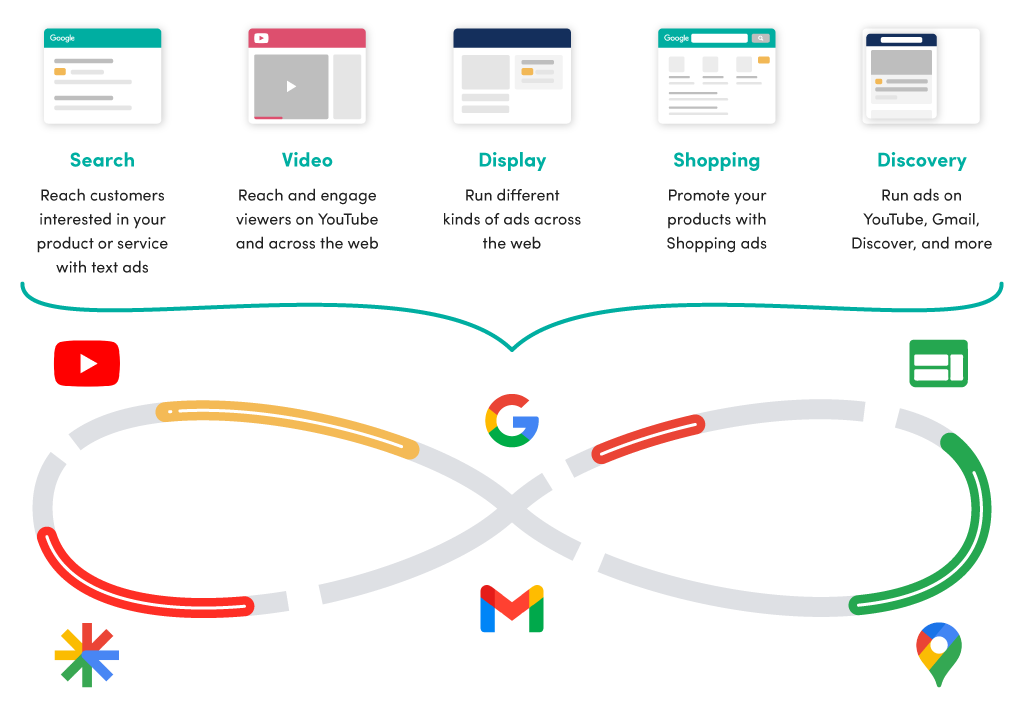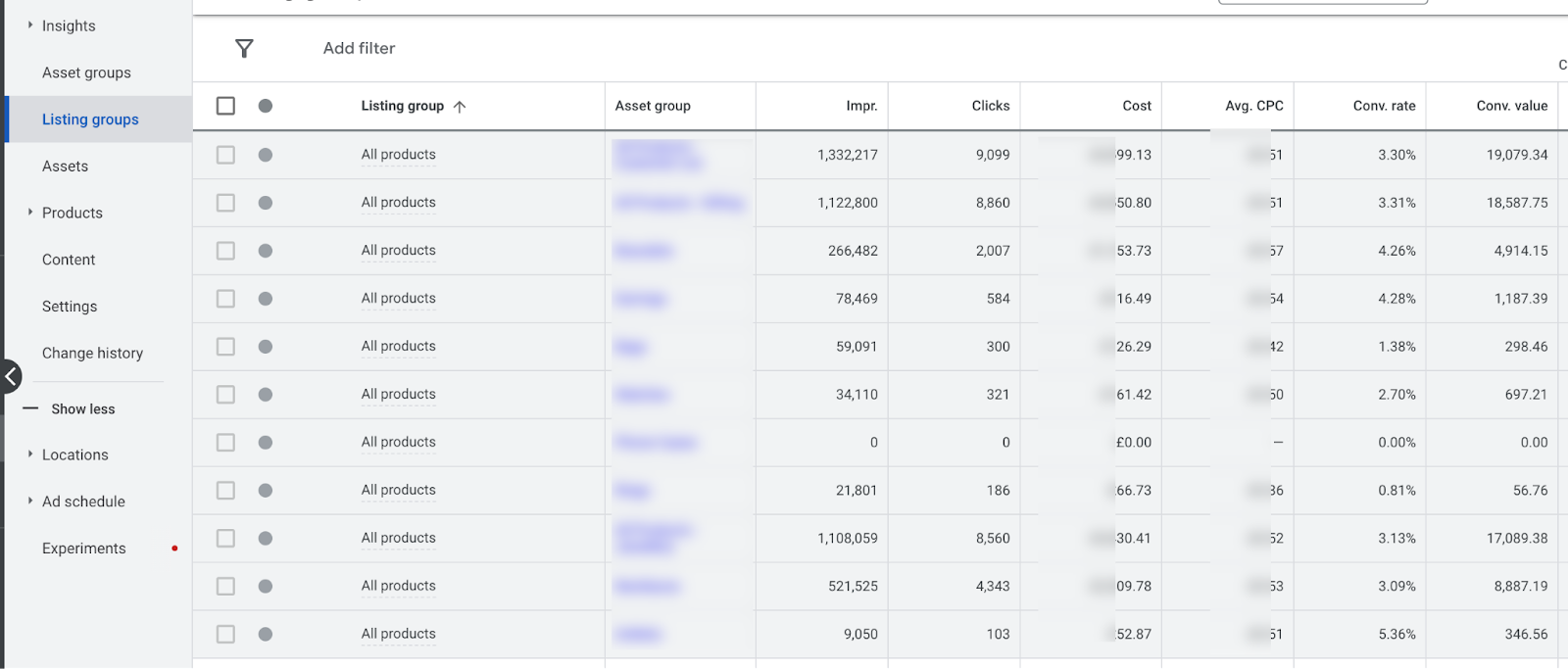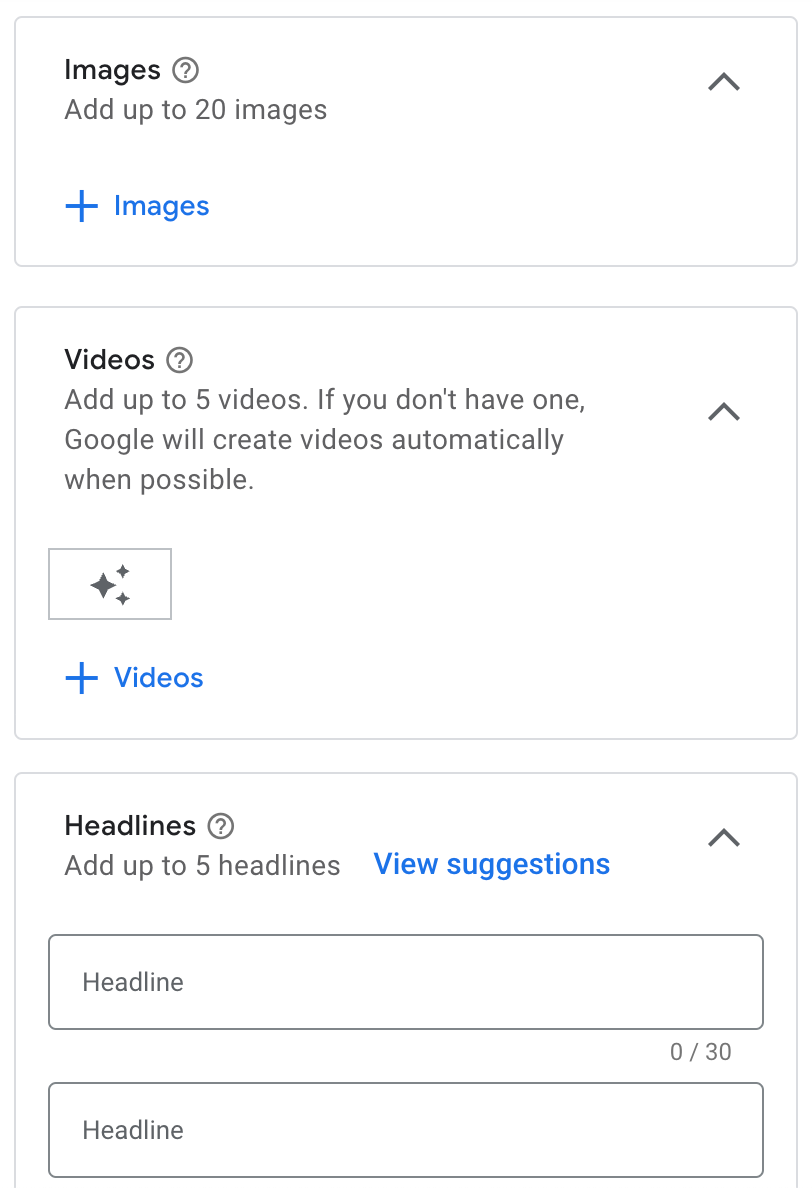Summary
- Performance Max is a completely different campaign type than Smart Shopping:
- It combines 7 different campaign types into 1 campaign, whereas Smart Shopping was primarily a Shopping campaign.
- You can set Performance Max to focus on Shopping Ads if you want to maximize Shopping Ads as a channel.
- By stripping assets, you take away Performance Max’s ability to run on Search and much of its Display ad inventory.
- Stripping assets means you should create the missing campaign types yourself.
- Performance is the final decision-maker.
Intro
Performance Max was created to simplify campaign management in Google Ads. Google has taken this as an opportunity to go from 5–7 different campaign types to a single campaign type:

That’s a great idea, but in reality, it’s not always what we want or even what’s best for us as advertisers.
90% of the advertisers I’ve spoken to have seen no other choice but to go with Performance Max and follow these best practices:
- Create asset groups.
- Add text assets, images, and videos.*
*Most of which is done in fear that if we don’t, then Google will automatically create inferior assets (and sometimes good assets).
This means that today, we have far more campaigns running on low-value ad inventory from Google (which is bad) but also a lot more accounts that run Dynamic Search Ads, Discovery Ads, and Gmail Product Ads (which is good).
The question I’ve posed ever since diving into Performance Max at the beginning of 2022 is this:
Should you run Performance Max campaigns according to Google’s best practices by adding assets, or should you tell it to focus on the Shopping Ads format only?
This is the question I will answer in today’s article.
Before going into how, we need to discuss why and when.
Cases for Shopping Ads Performance Max
Shopping Ads are your highest-performing campaign type.
By increasing budgets for a full Performance Max campaign, you are also increasing the budget for further testing on Search, Display, and YouTube.
If your goal is to maximize your Shopping effort, then focusing solely on Shopping Ads would make a lot of sense.
If you already run well-designed Search and Display campaigns, then it would make more of a mess to add full Performance Max campaigns to the mix.
As of this writing, there is no additional advantage to be gained from running all the campaign types in a single campaign (but that could change in the future).
No insights as to how much spend goes to Shopping, Search, and Display is a no-go for me.
I can access the same ad inventory that Performance Max has, so Performance Max is not giving me (as a PPC professional) anything that I can’t do on my own – again, this one might change in the future.
But not knowing how much spend goes to video – information that would let me know whether investing in new/better video creatives is simply a no-go for me.
Cases for Running Full Performance Max Campaigns
If two or more of these are true for you, then it could make sense to run Performance Max campaigns:
- You are not already running Dynamic Search Ads.
- You are not running broad-match keywords.
- You are not running any Display/Retargeting campaigns.
- You have no desire or in-house competencies to run more optimized setups.
Shopping vs. Non-Shopping Ads: How Much Goes Where?
The fastest way to find out is by going to the Listing Groups tab, sorting by listing group, and adding up the “All Products” numbers for each asset group:

Then, take this number, calculate the total spend that is directly related to a product, and compare this total spend to the total cost/revenue in your Performance Max account.
An easier alternative, and my preferred method, is simply going to Reports and creating a report based on item ID. Download to Excel and get the totals—easy peasy.
In the case above, it’s 17,767 in cost and 71,144 in conversion value for Shopping Ads.
The totals for the Performance Max campaign are:

To find out how much of this is for Shopping Ads and how much is for Non-Shopping Ads, we simply subtract one from the other:
- 20,700 – 17,767 = 2,993 in Non-Shopping costs
- 84,000 – 71,000 = 13,000 in Non-Shopping revenue
- Non-Shopping ROAS = 434%
Which, in this case, is pretty good.
I doubt it’s because Google has found a magical source of high-converting display traffic. My belief is that it’s due to a missing Dynamic Search Ads campaign and Discovery Ads.
But deciding whether to choose a full Performance Max setup or focus on Shopping Ads doesn’t have to be all or nothing.
It’s Not All or Nothing
You don’t have to choose Shopping Only or Full Performance Max as if it’s a yes-or-no question. You can choose to use a full Performance Max setup for your bestsellers and a Shopping Only setup for all other products.
This has three benefits:
- Display, Search, etc. are focused on bestsellers.
- You can invest more in images/videos, writing text assets, etc. because it’s for less than all your products.
- Increasing the budget does not mean potentially increasing spend on low-performing products.
Still, you should create Dynamic Search Ads, as when you remove assets, you will not show text ads. This is fine. Just use Dynamic Search Ads instead.
The How: No Assets = Shopping Ads Only
This is the how to the why, and when that we’ve already gone through.
I want to highlight that this doesn’t mean you can’t get any clicks on Display, YouTube, etc.
It just means that you focus on Shopping Ad formats, which include Shopping, Dynamic Retargeting, YouTube, and (not confirmed) Gmail Ads.
It’s fairly simple. You just need to remove all the assets in your Performance Max campaign:

Then, Performance Max cannot put together any ads for Search or other ad formats (like video, static images, or Responsive Display Ads) and is thus unable to serve on the corresponding ad inventories.
Now, the question I get the most is:
I’ve been told Performance Max will create assets for me automatically. Is this true?
That’s correct, but Performance Max will not create any assets from scratch. Performance Max will create videos and responsive Display Ads if text assets are already in the campaign but not if you have no assets.
To verify this, here is an example from the same campaign with no assets that is shown in the screenshot above.

On the left, you can see the total cost, and on the right, you can see the cost associated with products.
Notice how the total cost lines up perfectly with the cost associated with products? That’s no accident 🙂
Note: This only works for Upgraded Smart Shopping campaigns if you create a new asset group.
Display, YouTube, & Search Ads Go Away When Stripping Assets
Now, when you decide to strip assets, it’s important to understand what you are saying goodbye to in terms of ad inventory.
It’s not smart to ignore this.
Just because I don’t think it’s a good idea to mix Search, Shopping, and Display, it’s not like I don’t think it’s a good idea to run campaigns in all the ad inventory Google has.
I recommend that everyone who strips assets from Performance Max should also set up the following campaigns:
- Dynamic Search Ads.
- Display Retargeting & Discovery Ads.
Furthermore, you should be aware of whether it makes sense to run other campaign types, like YouTube or regular Display Ads.
End of Discussion? Performance…
At the end of the day, there is only two parameters that makes sense. And those are revenue and ROAS. Yes, there are some complexities around new versus existing customers, profit, and other parameters, but let’s keep it simple to avoid me writing 500 more words in the conclusion.
We may have many theories and ideas suggesting that you need to push Shopping Ads because they’ve performed best in the past. But if Google has truly found the golden goose in underutilized ad inventory with Performance Max and the revenue/ROAS you see is better than what you could produce otherwise—well then, that’s it. Performance Max will be better for you.
The best example of this is the fact that SO MANY eCommerce stores don’t run Dynamic Search Ads. By incorporating Dynamic Search Ads into Performance Max, Google has instantly created a 10–20% boost in most eCommerce accounts.
In this sense, Performance Max is doing exactly what it should be doing: finding underutilized ad inventory that can generate revenue at your desired ROAS levels.
I only have two fundamental issues with this:
- All eCommerce accounts should have run Dynamic Search Ads in the first place, so we’ve given Google a really low-hanging fruit here.
- No insights into campaign-type performance makes it impossible to define how Performance Max can be further optimized.
My gripe with the performance argument is that we need to compare apples to apples. I’ve seen several eCommerce accounts that only ran Smart Shopping before moving over to Performance Max. Performance Max then immediately uses its Dynamic Search Ads component to start bidding on branded terms.
That’s not a fair comparison.
Yes, it’s my belief that you should be bidding for your brand terms, but that should occur in a separate controllable campaign with manual bidding. Not in Dynamic Search Ads, not in broad match search terms, and definitely not in Performance Max.
But at the end of the day, unless you know enough about PPC to be considered a power user, then you might not (and probably should not) care as much about these things as I do.
I know what I can do with accounts when they have dedicated Search, Shopping, and Display campaigns—but considering that so many eCommerce accounts aren’t doing the absolute basics (like running Dynamic Search Ads), a black box campaign type like Performance Max could benefit the average advertiser.
Do I recommend Shopping Ads Performance Max?
I go back and forth on Performance Max.
On one hand, I’m dead set against the black box. But that’s because I’m a professional who knows what he’s doing. I know how to put the different campaign types together and how to allocate budgets based on blended ROAS frameworks, and I don’t ever miss a campaign type all of a sudden.
But after seeing how many eCommerce stores don’t even use Dynamic Search Ads or have extremely sparse Search setups running, I can see the benefits of Performance Max.
Therefore, my final recommendations are:
- If you know what you’re doing and have the time to invest, then you can get more out of not running a full Performance Max setup.
- If you don’t have the time or competencies, then running a full Performance Max setup will make the most sense for you.





1 thoughts on “Feed-Only Performance Max, or Full Setup: What’s Best For You?”
Thans for your post! A lot of marketers makes this mistakes…